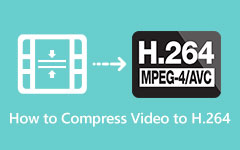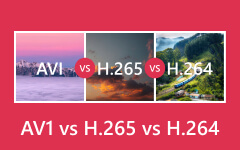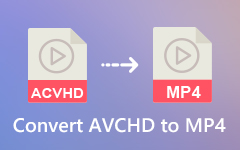Understanding H.264 vs MP4 File Formats & How to Convert Between Them
When converting H.264 to MP4, the difference between these two formats should be known, and the best tools must be employed in this process. This article discusses the distinction between H.264 and MP4, emphasizes why Tipard Video Converter Ultimate is a good choice when it comes to converting H.264 to MP4, and also presents a step-by-step guide for using VLC Media Player to achieve the same objective effectively as it's possible. Whether you need a powerful converter with advanced features or an easy, free solution, this manual will address your needs.

Part 1. H.264 vs. MP4 - Is H.264 the Same as MP4
A comparison of MP4 and H.264 illustrates some of the essential differences between these common video formats. Even though they are often mentioned together and used in similar scenarios, they have different goals and roles within digital video. It is important for anyone working with video compression and distribution to appreciate these disparities.
| Feature | H.264 | MP4 |
|---|---|---|
| Purpose | H.264 is a video compression standard, also known as AVC (Advanced Video Coding). | MP4 (MPEG-4 Part 14) is a digital multimedia container format. |
| Function | It defines how video data is compressed and encoded to reduce file sizes while maintaining quality. | It is designed to store video, audio, and other data, such as subtitles and still images. |
| Usage | H.264 is widely used for recording, compression, and distribution of video content. It's employed in various formats, including Blu-ray discs, internet streaming, and more. | MP4 files can contain video encoded with different codecs, including H.264. It's popular for online streaming and video distribution due to its versatility and efficiency. |
Main Differences:
- • Standard vs Container: H.264 is a standard codec, while MP4 is a container format.
- • Encoding vs Storage: H.264 encodes the video data, whereas MP4 stores the encoded video and other types of data.
- • Compatibility: An MP4 file may contain videos coded with H.264, but it can also contain others coded with different codecs.
Practical Example:
When you watch a movie on the internet, its size may be reduced by using an encoding method known as H.264 without destroying its quality. After that, it's saved in an MP4 container; such containers could also include an audio stream, subtitles or all those features in one single file.
Part 2. The Best Way to Convert H.264 to MP4
Tipard Video Converter Ultimate is an impressive media conversion tool that supports a wide range of video and audio formats. It supports Lossless Conversion and offers many editing features, which makes it a good choice for converting H.264 to MP4.
Key Features:
- • Tipard Video Converter Ultimate ensures smooth and simple conversion from H.264 to MP4, making videos compatible with different devices.
- • You can change multiple files at once, saving a lot of time in case you have many H.264 files to deal with.
- • During the conversion process, your original pristine quality can be maintained, guaranteeing intactness or no loss of details in your original .h265 videos.
Step 1Download and install Tipard Video Converter Ultimate on your personal computer.
Step 2Then, please open it and select Add Files to load the H.264 video file from the software.
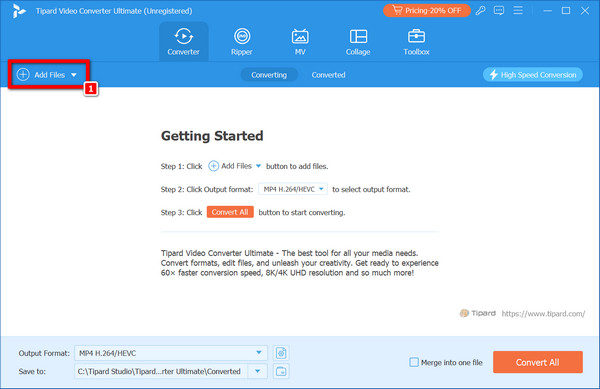
Step 3In MP3, click the Video tab with a dropdown button, and then select MP4 from the available formats list.
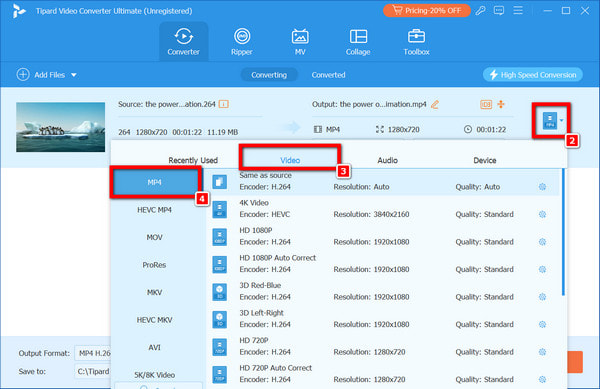
Step 4To manipulate your videos using filters like cropping, rotating, watermark addition, or adjusting brightness, hit Edit, which is initially represented by a wand symbol (that looks like a magic wand).
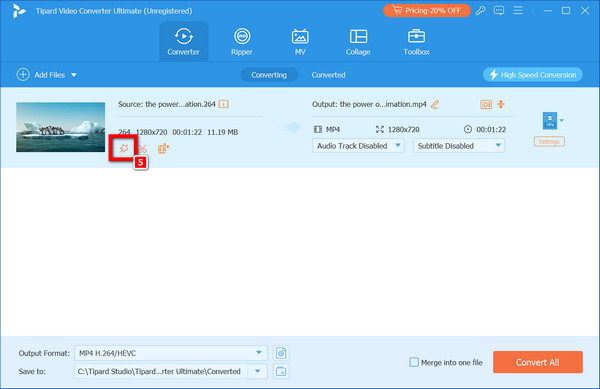
Step 5The conversion process starts when you click on the Convert All button. The software will convert your H.264 video into MP4 format at high speed.
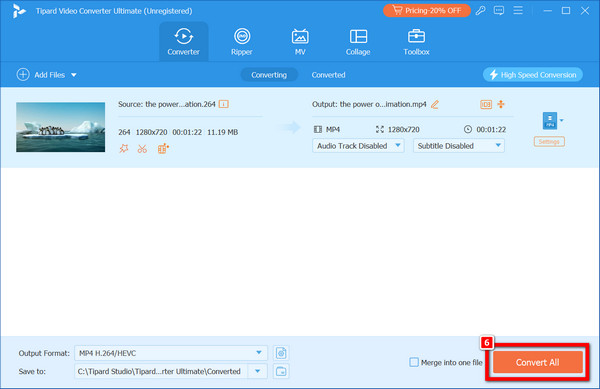
Part 3. Easily Convert H.264 to MP4 in VLC
Ever since, VLC Media Player has been one of the most famous open-source media players, capable of supporting various video and audio formats. This is particularly useful for playing CCTV camera videos on the VLC DVD player, a well-known open-source multimedia player that supports many audio/video formats.
Key Features:
- • VLC supports many audio and video file types, so other software is not needed for various conversions.
- • When converting files using VLC, users have an uncomplicated interface and easy-to-use features, making this process fast and simple.
- • Adjusting the bitrate or frame rate and increasing video resolution, among other parameters, can optimize MP4 output.
- • VLC spots no extra downloads or installations as it works as a standalone tool for all conversions made using it
Step 1Download VLC Media Player from the official website and install it on your computer if needed.
Step 2Next, click the Media tab at the top left corner of the software and choose Convert/Save.
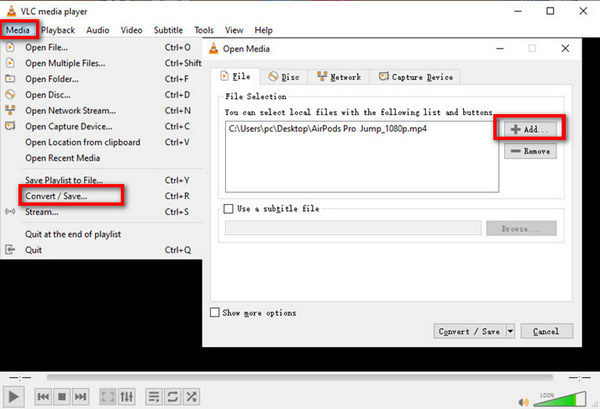
Step 3To import your H.264 video file, click on the Add button in the Open Media window. After adding the file, click on Convert/Save, which is below.
Step 4In the Convert window, go to the Profile section. Select MP4 from the dropdown list as the desired output format.
Step 5Click on the tool wrench icon near the Profile dropdown to set up video resolution, bitrate, and frame rate, among other options, according to your preferences.
Step 6Under the Destination tab, click the Browse button to select where you desire to store this converted mp4 file and give it a name.
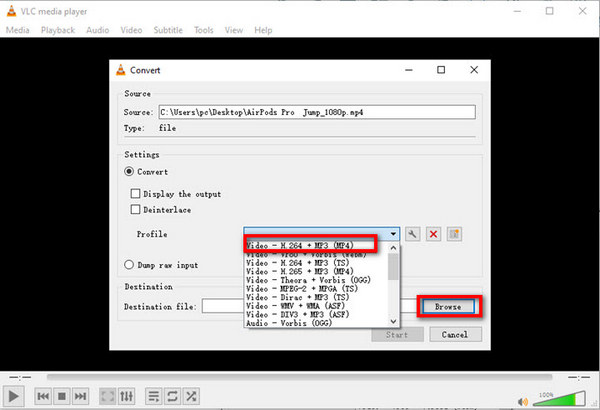
Step 7Clicking Start will initiate the conversion process. VLC will convert your H264 video to MP4 format.
Conclusion
In conclusion, understanding H.264 vs. MP4 is essential for efficient video compression and storage. Tools like Tipard Video Converter Ultimate and VLC Media Player make converting H. 264 to MP4 easy. Whether you need high-speed conversions with advanced editing features or a straightforward, free solution, these methods ensure your videos are compatible and high-quality, thus enhancing your overall video experience.



